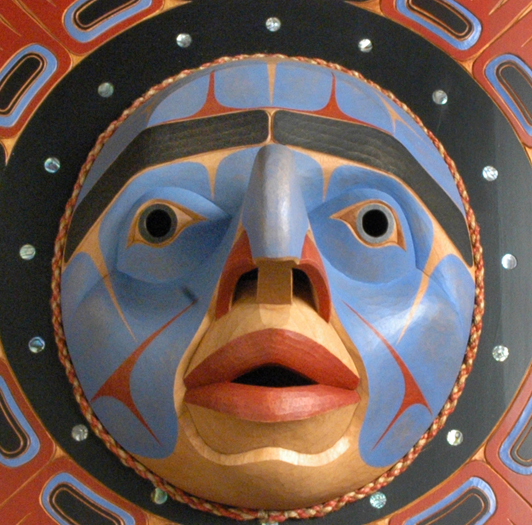Image of the Sun Mask
EXHIBITION:
Facing ForwardSINXOLATA, “IMAGE OF THE SUN”
Atlguntam and the four Supernatural Carpenters
At the time of European contact in the late eighteenth century, the Nuxalk people occupied villages in the Bella Coola Valley, North and South Bentinck Arms, Dean Channel and Kwatna Inlet, in what is now British Columbia. This area provided its inhabitants a plentiful supply of food and natural resources. This abundance allowed then the freedom to develop a rich and complex ceremonialism. Their winter ceremonial season extended from approximately October through March.
During the Winter Ceremonials, masked dancers impersonated the inhabitants of the supernatural world. This tradition included a great variety of dramatic and imposing masks. These masks often represented natural elements such as the sun, moon, earthquake, echo, and various aspects of the weather, etc.
They believed there were several “worlds”, or planes of existence, layered on above the other. The center world was where the Nuxalk People lived in human form. Above this center plane was the “Sky World”, where many spirits dwelt in a large house called Nusmat’a, the Land of Creation. The most powerful of these spirits was the supreme deity, Atlguntam. This deity was not created; but always existed. The image of the sun was used to represent Atlguntam, and to dramatize his power.
At the beginning of time, Atlguntam decided he needed help to shape the world. So, he created four brothers; the Supernatural Carpenters, whose task it was to put the world into its present form. These four artisans shaped the land features, flora and fauna, and carved the first humans. They were responsible for the arts and culture of the Nuxalk People.
Sun Masks were not worn the way a traditional mask is worn. They were moved by mechanical means across the performance house, during the appropriate time in the ceremony.



